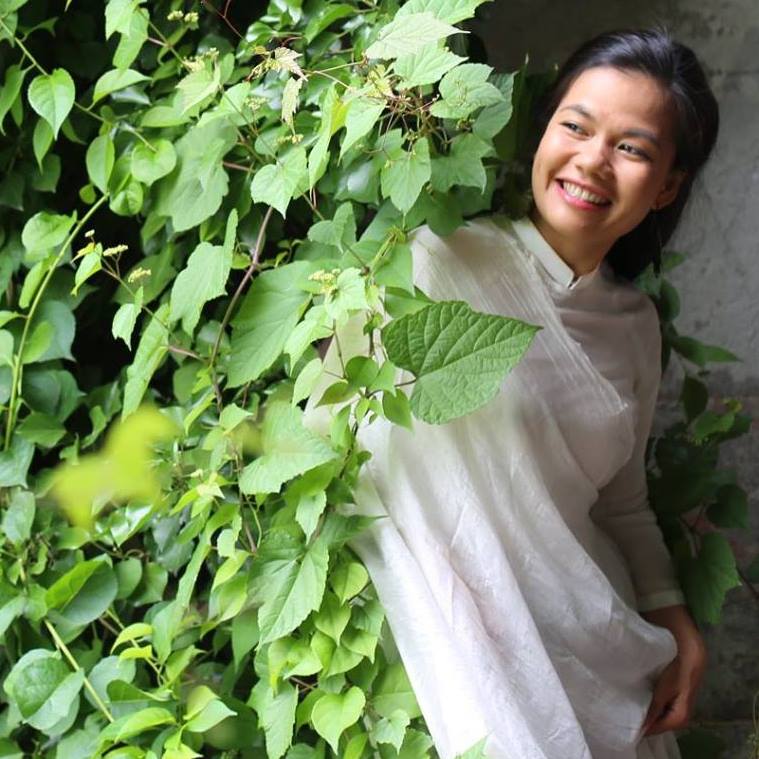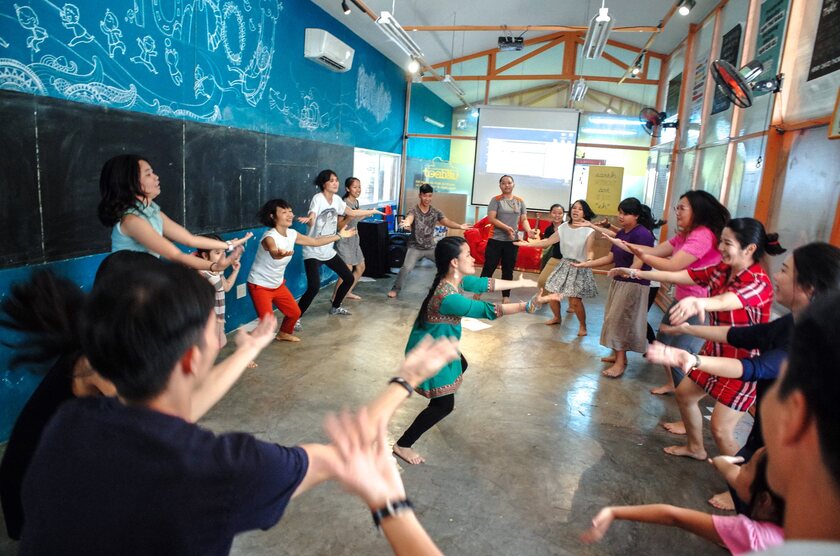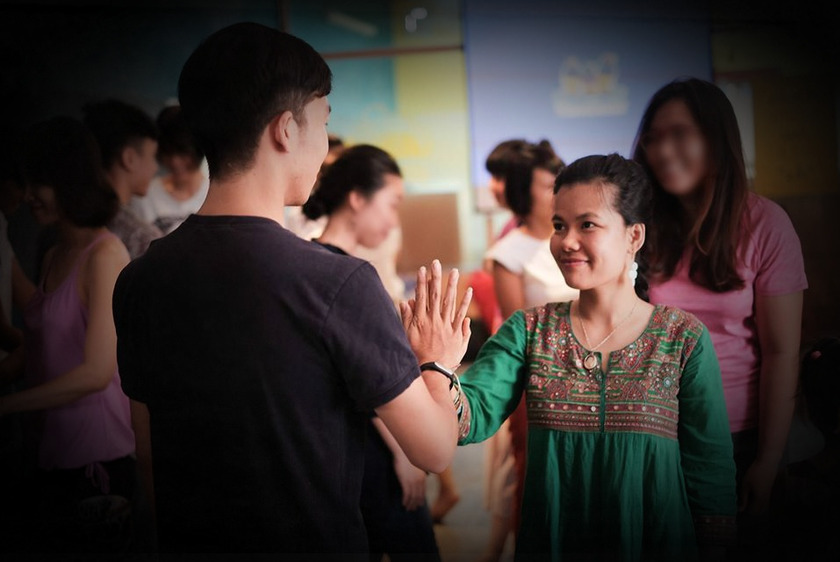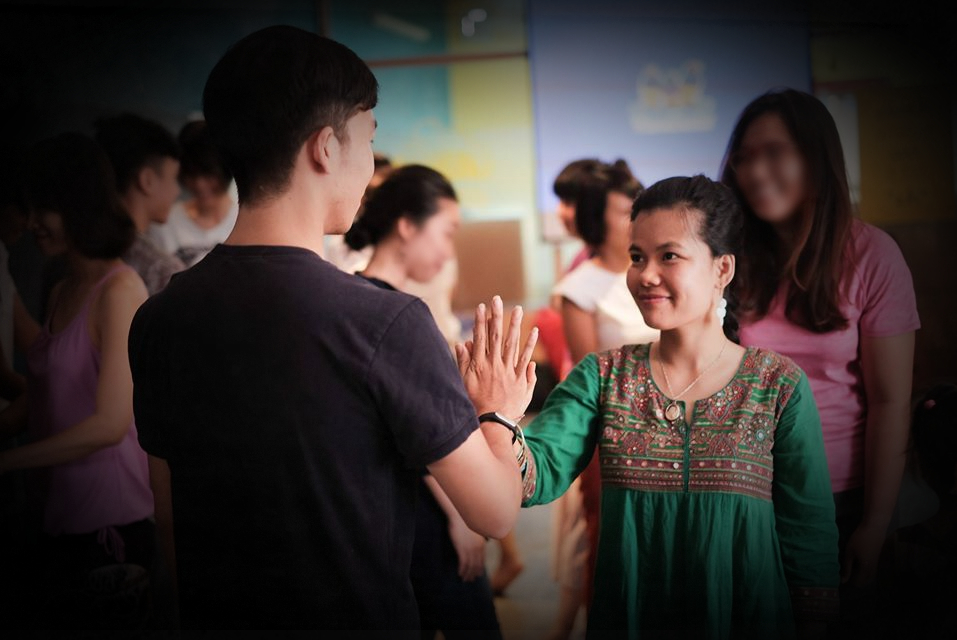Bui Tuyet Minh is a pioneer in introducing dance therapy to Vietnam in psychological treatment for vulnerable subjects such as autistic children, elderly people with dementia, disabled people, abused women... to increase confidence in communication and find the meaning of life.
She currently lives and works in the United States as a dance/movement therapist. She also runs a dance/movement therapy organization in Vietnam that provides individual therapy activities, teaches short courses in dance/movement therapy, and promotes community mental health.
"Healing is a journey. There are many talented and ethical therapists. However, you are always your own best teacher and therapist when you practice listening and observing your body to enrich your subtlety and intuition. With dance therapy, I always believe that learning to dance is learning to be human, learning to live mindfully to observe and connect with the source of love and body wisdom (bodifulness). From there, cultivate altruism and empathy for yourself and everyone. In this ever-changing world, there is no place like home to find peace. And the body is your first peaceful home," psychotherapist Bui Tuyet Minh shared.

Bui Tuyet Minh is the pioneer in introducing dance therapy to Vietnam for psychological treatment.
Reporter (PV): What was the opportunity that made you start with dance/movement therapy?
Bui Tuyet Minh:My chance to get involved with dance/movement therapy came to me on my journey of self-discovery through art. 10 years ago, I was a teacher, an art coordinator at an international school in Hanoi, and also an educational manager in charge of professional matters and direct teaching at the art organizations Sol Art and Life Art.
My students are very diverse and I realize that dance/movement is a basic need for everyone. Dance/movement can help people express emotions that are difficult to express with words. I have experienced internal changes in myself. Each direction, rhythm, space or gravity in each body movement directly affects attitudes, emotions and ways of thinking.
Moving or dancing in sync with the group helps me escape isolation, creates a sense of comfort and resonates with collective energy. Meanwhile, natural movements based on emotions and imagination from each individual's inner self help me recognize and believe in inner urges and intuition. All the feelings, memories, emotions that are suppressed and buried in the body from one's own despair are expressed through movements, whether unconsciously or consciously, leading to profound changes in perception. I have always felt closer, more real and "in love" when I "live", empathize with students through body language and co-create.

According to her, dancing/movement is a basic need of anyone.
With over 10 years of experience in the field of education, I have always believed that a true teacher must have the ethics, character, knowledge of an educator, a therapist, and a spiritual practitioner. These elements not only awaken the joy of creativity and learning, but also heal and empower each student. With that belief, I researched and worked hard to win a scholarship to complete a two-year master's program in dance/movement therapy at Sarah Lawrence College, New York.
The curriculum with knowledge about the body, neurology, psychology, culture and especially the art of dance and movement to heal the body and mind has helped me satisfy my journey of discovering the vast world from my own body - the vast universe within myself.
PV: In your opinion, what is dance therapy? When should people seek dance therapy? Are there any limits to who can participate in this subject?
Bui Tuyet Minh:Dance therapy is a form of psychological therapy that combines the science and art of dance/movement as a means of connecting and supporting oneself. With the aim of achieving equal dialogue, connection, empathy, self-awareness and comprehensive development of body and mind. In addition to being applied to psychological therapy for individuals with special needs (autism spectrum disorder, dementia, psychological trauma...), dance/movement therapy is also applied as a therapy to reduce stress, prevent disease and manage emotions.
Dance/movement therapy can be effective with individuals, groups, couples, families, infants, people with disabilities, adolescents, seniors... and anyone who is still breathing (laughs).

Dance/movement therapy can be effective with individuals, groups, couples, families, infants, people with disabilities, adolescents, seniors, veterans...
PV: How do you specifically help students participating in the dance therapy course to relieve stress?
Bui Tuyet Minh:The courses organized by Vietnam Dance/Movement Therapy are basic courses that provide foundational knowledge so that students can apply some basic principles, skills and practices in self-care as well as career and life application and development.
If someone is depressed, has mood disorders or psychological problems, I will have a mental health assessment questionnaire and movement exercises to assess body flexibility. From there, I will plan an individual psychological therapy for at least 3 months.

Dance/movement therapy is also used as a stress-reduction therapy, disease prevention, and emotional management therapy.
PV: As a pioneer of dance/movement therapy in Vietnam, what difficulties have you encountered in your dance therapy journey?
Bui Tuyet Minh:10 years ago when I learned about this industry, I had no one to advise me because it was so new. Dance/movement is a process of self-experience so words are not enough to express it. When I answered the scholarship interview, I also very naturally asked the judges to close their eyes: feel the breath, connect deeply with the body to move according to my instructions and all three judges followed. That is how I convinced the judges to understand and award me the scholarship.
Many people ask, “What is dance therapy? Can you dance for us? Or teach me some dance steps?” I laugh and say, “No, on the contrary, you are the one dancing and I am just listening/observing.” People often mistake dance therapy for the name of a type of dance, but that is not the case. Dance therapy is the use of dance/body movement as a main tool in the process of psychotherapy.
It can be explained like this. The dance therapist does not teach you dance techniques but guides you by asking questions, suggesting, accompanying and conversing with you through body movement language, rhythms, spaces, tempos appropriate to your physical condition, cultural factors, religious beliefs (if any) to help you observe yourself, express difficult emotions that you are not able to face on your own. The dance therapist always opens up so that each individual can find faith in themselves, believe in their own inner strength and ability to heal themselves.

Dance/movement therapy can be effective with individuals, groups, couples, families, infants, people with disabilities, adolescents, seniors... and everyone who is still breathing.
PV: Many people believe that dance therapy is a way to heal the body and mind. What do you think about this opinion?
Bui Tuyet Minh:You asked me about dance therapy (in Vietnamese it is dance with therapeutic properties, and in English it is Therapuetic Dance). But what I am doing and introducing to you is dance therapy (in Vietnamese it is dance psychotherapy and in English it is Dance therapy). Dance therapy and dance therapy (Therapeutic dance and dance therapy) are two completely different concepts in purpose and nature. According to Barbara Mettler, "Creative Dance Art or Therapy?", American Dance Therapy Association magazine, 1990, the core purpose of any art form, especially dance, is to bring joy in creation and a feeling of comfort and relaxation afterward. This is the meaning of aesthetic experience.
The art of dance has the basic purpose of bringing about the experience of beauty, aesthetics, and indirectly dance/movement can bring other positive values (such as expression, relaxation, improving physical and mental health...). You can learn dance from friends, teachers or learn by yourself on youtube.

Dance therapists always inspire each individual to find faith in themselves, in their own inner strength and ability to heal themselves.
We must recognize the difference between aesthetic and practical purposes. Dance therapy has practical purposes. The ultimate goal of dance therapy is to heal physical and mental injuries. Dance psychotherapy is a therapeutic method that combines psychological science and the art of dance with practical purposes, specific and long-term treatment plans to help clients overcome psychological traumas that they are unable to overcome on their own.
Dance therapy is a holistic and humanistic psychotherapy that addresses the mind and body. To achieve this practical therapeutic goal, you will work with a dance/movement therapist who is qualified and has completed at least a Master’s degree in dance therapy.
Currently, in Vietnam and many other developing countries, dance/movement therapy is still a new concept and there is no association to manage or train this industry. Therefore, I still exchange and learn, participate in research topics to improve my expertise and follow the standards of professional ethics at the American Dance Therapy Association since 2013.
PV: Thank you very much, Tuyet Minh!



































